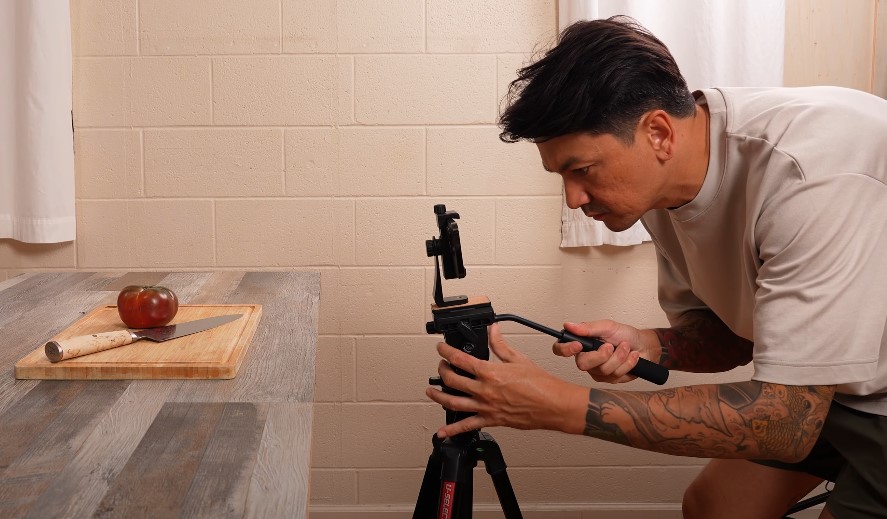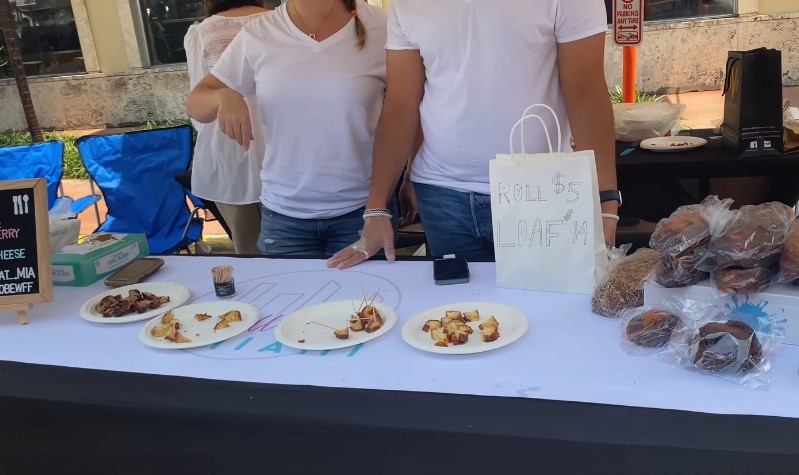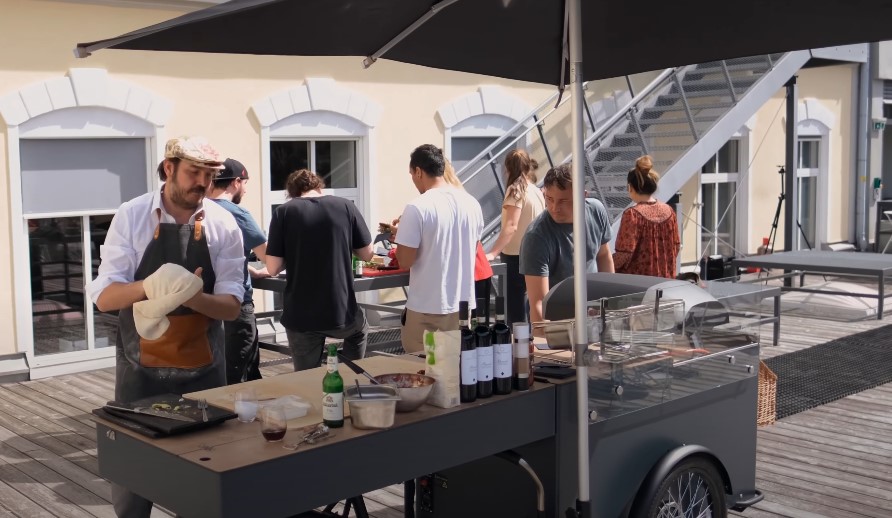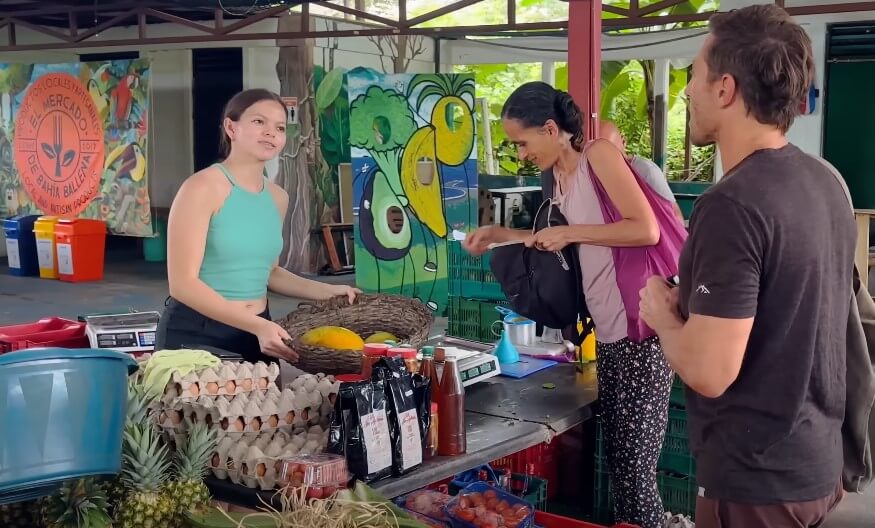Big dreams don’t need a big kitchen.
In fact, some of the most successful food businesses today started in tight spaces—a cramped home kitchen, a backyard shed, a fold-up cart, or a single countertop.
If you’ve got a passion for cooking, a knack for flavours, and just a little bit of room to work, there’s no reason to wait for a commercial kitchen or full-sized café. You can start right where you are.
Let’s walk through real food business ideas that work beautifully in small spaces, along with what it actually takes to get going, the potential upside, and a few hard-earned tips to keep you on track.
A Quick Look
| Business Idea | Startup Costs | Profit Margins | Space Needed | Main Hurdles |
| Food Blogging | $100 – $1,000 | 60–80% | Kitchen + laptop | Growing an audience, SEO |
| Home-Based Catering | $1,000 – $5,000 | 40–60% | Home kitchen | Licenses, managing orders |
| Artisanal Products | $1,000 – $5,000 | 40–60% | Home kitchen + storage | Ingredient sourcing, compliance |
| Meal Prep Service | $1,000 – $5,000 | 40–60% | Kitchen + fridge space | Delivery logistics, food safety rules |
| Mobile Food Cart | $5,000 – $15,000 | 20–40% | Cart storage space | Permits, location access |
| Online Cooking Classes | $100 – $1,000 | 60–80% | Clean kitchen + camera | Tech setup, audience engagement |
1. Food Blogging

You don’t need a restaurant to make your mark in the food world. Sometimes, all it takes is a camera, a stove, and a story.
Food blogging is one of the most flexible small-space food businesses you can start.
From recipe testing in your own kitchen to writing blog posts on your couch, it’s a business that’s entirely online, but rooted in real, hands-on food experience.
What makes it work
- Minimal setup: A basic kitchen, a computer, and a decent camera are enough.
- Income streams: Ads, affiliate links, e-cookbooks, sponsorships.
- Schedule freedom: Create content on your time.
If you ever branch out into merch, say, selling screen printed t-shirts with your blog’s name or food puns, keep the designs clean and on-brand.
Things to know
It takes time to build traffic and trust. Food blogging is competitive, so choosing a tight niche, like gluten-free desserts or 5-ingredient meals, can help you stand out.
Example: Brandon Matzek started Kitchen Konfidence as a side project. Over time, it turned into a profitable brand, thanks to high-quality visuals and focused content.
Tips to succeed:
- Get comfortable with SEO—it’s how people will find you.
- Take great photos. Lighting makes all the difference.
- Use Pinterest and Instagram to build traffic fast.
2. Home-Based Catering
If you’re someone who lights up when feeding a crowd, catering might be your calling.
You don’t need a restaurant or a commercial space; you can prep meals from a certified home kitchen and serve events like small weddings, birthdays, or business lunches.
Why it fits small spaces
- Work from your home kitchen.
- Prep only as needed—no daily inventory.
- Grow through referrals and repeat clients.
What to watch for
Health permits and food safety compliance are non-negotiable. It takes planning and paperwork, but once you’re set up, the business can scale naturally.
Example: Many caterers start local, cooking for friends or neighbors’ events. Word spreads fast when the food’s good.
Tips to succeed:
- Focus on a niche—maybe it’s plant-based catering or authentic regional dishes.
- Set clear menu packages and pricing early.
- Use Instagram to showcase past events and happy clients.
3. Artisanal Products

If you love crafting small-batch creations, consider turning that into a business. Jams, hot sauces, nut butters, pickles, even spice blends—people love handmade, high-quality products with a story behind them.
Why it’s perfect for tight spots
- Use your home kitchen and standard canning or cooking equipment.
- Products can be shelf-stable and sold online or at markets.
- Inventory is compact and easy to manage.
Business edge
Consumers increasingly want natural, small-batch, and preservative-free options. The jam and jelly market alone is expected to hit $9 billion globally by 2027.
Example: Mr. Miller’s Homemade Jam grew from a local kitchen project to a beloved brand by emphasising fresh ingredients and local sourcing.
Tips to succeed:
- Develop signature flavours—like rosemary plum or chipotle peach.
- Invest in great packaging. The look sells almost as much as the taste.
- Comply with cottage food laws or get inspected if required in your state.
4. Meal Prep Service
View this post on Instagram
Meal prep services are booming, especially for people who want healthy food but don’t have time to cook.
From fitness-focused meals to allergen-friendly menus, there’s room to customize for different needs.
Works great from home
- Prep meals once or twice a week.
- Serve a limited local delivery area.
- Offer subscriptions for steady revenue.
Market potential
The meal delivery market was worth $14.58 billion in 2021 and could hit $38.41 billion by 2027. There’s demand—and it’s growing fast.
Example: While national brands like Blue Apron dominate, local meal prep services are thriving in neighbourhoods and small towns by offering fresh, personal service.
Tips to succeed:
- Use eco-friendly packaging—it’s a selling point.
- Offer flexible portions: singles, couples, and family-sized.
- Let clients pick based on dietary goals (low-carb, dairy-free, etc.).
5. Mobile Food Cart

A food cart lets you keep your kitchen compact while taking your food right to hungry customers. It’s a lower-cost, lower-risk alternative to opening a restaurant and works well if you have a signature dish people can’t resist.
Ideal for small setups
- Use a small cart instead of a full food truck.
- Store it in a garage or shed when not in use.
- Operate at festivals, farmers’ markets, or busy corners.
Startup realities
Expect to spend anywhere from $5,000–$15,000 getting set up with permits, equipment, and branding. But once you’re rolling, the margins are solid.
Example: Gourmet coffee carts or taco stands often become staples in their neighborhoods. Some even spin off into permanent locations once demand grows.
Tips to succeed:
- Keep your menu tight—3 to 5 standout items.
- Scout the best spots ahead of time and get permits locked in.
- Use social media to post your daily location.
6. Online Cooking Classes
Teaching people how to cook is one of the most rewarding things you can do with your kitchen—and now, thanks to Zoom and YouTube, you can do it from almost anywhere.
Perfect for small homes
- No need for a studio, just a clean, well-lit kitchen.
- Record or stream classes live.
- Focus on specific skills or cuisines.
Growing demand
The online learning market is growing rapidly, and cooking classes are right in the mix. People love learning to cook in a no-pressure environment, especially from home.
Example: Sur La Table now offers wildly popular virtual classes—proof that at-home instruction works.
Tips to succeed:
- Pick a niche: e.g., “Quick Vegan Meals for Beginners” or “Traditional Korean Fermentation.”
- Keep classes short and interactive.
- Offer PDFs, ingredient lists, and recordings as add-ons.
A Few More Things to Think About

Do Your Research First
Before investing in any idea, make sure there’s a market for it where you live—or online. Talk to potential customers. Visit farmers’ markets. Browse local Facebook groups. If nobody around you is offering paleo meal prep or spicy Korean kimchi, that might be your opening.
Check Local Regulations
Food businesses are regulated differently depending on where you live. Look into cottage food laws, health permits, zoning rules, and what your kitchen might need to pass inspection if required.
Start Small and Scale Smart
Don’t overbuild in the beginning. Run a test batch. Offer a limited menu. Try a one-month subscription. Let the business prove itself before you invest more time and money.
Marketing Can’t Be an Afterthought
Social media matters. A clean Instagram page with great photos can be more effective than a full website. Use it to share customer feedback, daily menus, behind-the-scenes moments, and links to order or book classes.
Final Thoughts
Starting a food business in a tight space isn’t just possible—it’s happening all over the world, every day. From humble home kitchens to pop-up carts, entrepreneurs are building real income and loyal customers without needing a restaurant lease or a giant team.
Whether you’re drawn to food blogging, meal prep, or teaching classes, each path has its own flavour. What matters is that you choose something you’re passionate about, start within your means, and stay consistent.
There’s room to grow, even in a small space.
And sometimes, that’s exactly where the best ideas are born.
Hi there, my name is Kelly Barlow and kellytoeat.com is my blog. Here, I write about various recipes I want to reccommend to readers.
I try to find the best possible recipes that can attract the attention of readers, and at the same time, I strive to write it in the most engaging manner possible.
When I was younger, I wanted to become a chef. Sadly, it wasn’t meant to be, but at the very least, I write about it.
